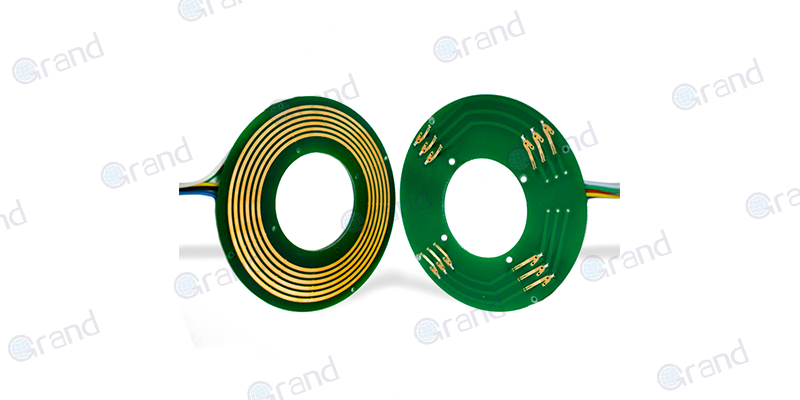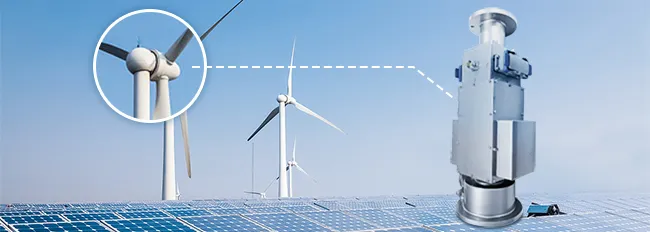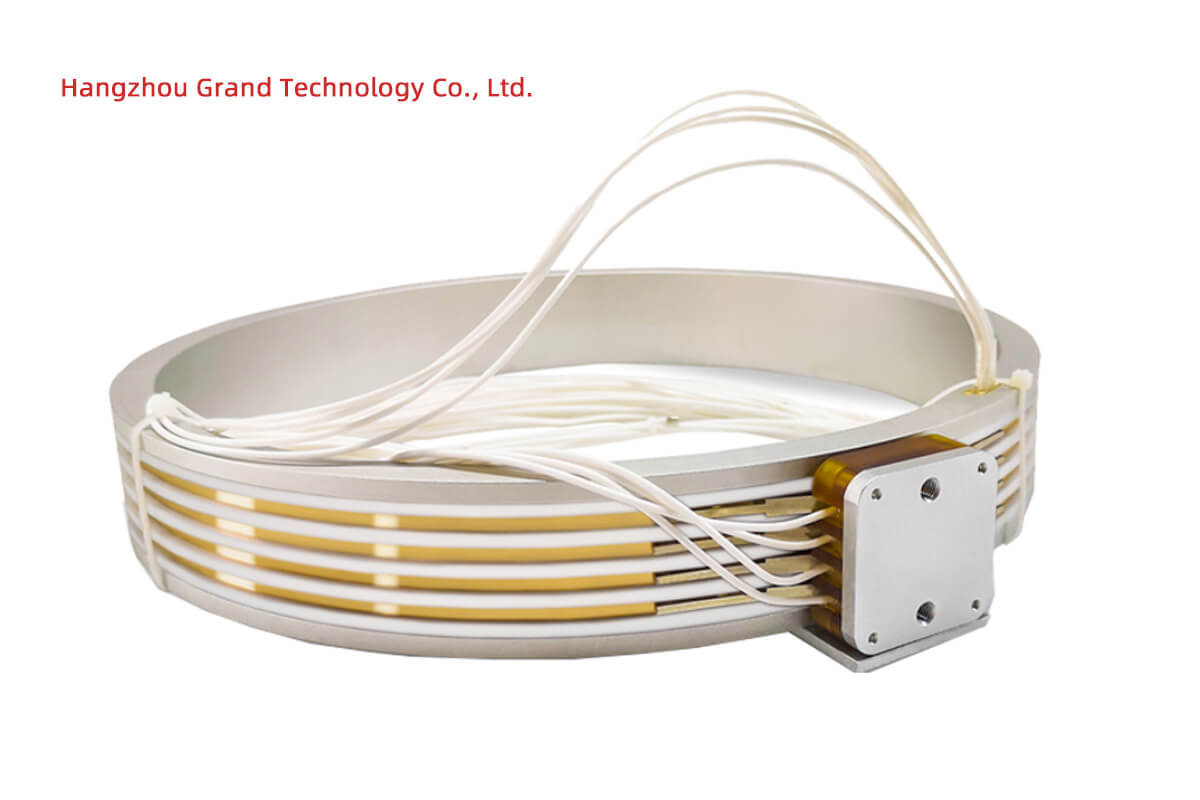As the world of technology advances, the challenges and demands facing industries compel continuous innovation. One such vital innovation is the wireless slip ring, an electrical connector that diverges from the traditional contact-based methods to ensure seamless transmission of power and data. Unprecedented in design and functionality, wireless slip rings have emerged to become a cornerstone of modern technology.
The primary objective of a wireless slip ring is to transmit electrical power and signals without any mechanical wear. This is achieved through the use of inductive coupling, eliminating the need for direct contact between the rotating and stationary components. The growing importance of wireless slip rings lies in their ability to overcome the limitations imposed by physical connections, making them suitable for applications where mechanical wear and tear are major concerns.
In this article, we delve into the inner workings of wireless slip rings, explore their applications, and discuss the advantages and drawbacks of adopting this technology. By understanding their significance in various industry sectors, we can appreciate the crucial role they play in driving technological progress.
How Wireless Slip Rings Work
Understanding the functioning of wireless slip rings requires diving into their core principle of operation: inductive coupling. At the heart of this technology, they employ a relatively simple yet highly effective method to maintain electrical connectivity. Let’s demystify how they achieve this without any physical contact, a feature that sets them apart from their traditional counterparts.
Inductive coupling, the driving force of wireless slip rings, is a process where two or more coils of wire are utilized. These coils, arranged such that they are in proximity but not in direct contact, generate an electromagnetic field. When an electrical current is passed through the primary coil, it creates a changing magnetic field. When the secondary coil comes within this magnetic field, it induces voltage or, in other words, electric current in the secondary coil. This phenomenon, known as electromagnetic induction, enables the wireless transfer of power and signals between the stationary and rotating parts of the slip ring.
The intriguing part of this technology is that it achieves electrical continuity seamlessly and effortlessly, without any need for a physical connection. There are no friction or mechanical wear issues to deal with, which drastically minimizes the need for maintenance. Wireless slip rings, therefore, offer a reliable solution, ensuring uninterrupted operation even in challenging conditions where traditional slip rings may falter.
Through this explanation, we can perceive the ingenuity behind the function of wireless slip rings. Equipped with an understanding of how they work, we are better prepared to appreciate their uses, benefits, and the considerations necessary when investing in this technology. As such, an expanding range of industries are looking to leverage the advantages posed by wireless slip rings, marking their importance in the realm of efficient power and signal transmission.

Applications and Uses of Wireless Slip Rings
The development and adoption of wireless slip rings have opened a realm of possibilities in diverse industries, owing to their innovative design and functionality. These devices hold the power to revolutionize the way power and signals are transmitted, solving pain points in numerous applications where traditional methods face limitations. To appreciate the impact of wireless slip rings, let us examine their roles across a range of fields and the devices they support.
Electrical Generators and Wind Turbines
One of the most significant applications of wireless slip rings is in electrical generators—specifically in wind turbines. Due to their operation in harsh environments, wind turbines require slip rings with high durability and low maintenance. Here, wireless slip rings excel as their non-contact design significantly reduces mechanical wear from continuous rotation. Moreover, they prevent the accumulation of debris, dust, and other contaminants, thus enhancing reliability and extending component life.

Satellite Systems
Satellites, being critical assets for communication, surveillance, and navigation, often require uninterrupted power and signal transmission. As they operate in space and are subjected to extreme conditions, they necessitate robust connections that do not falter due to wear or degradation. Wireless slip rings, with their ability to function flawlessly without physical contact, are incredibly suitable for satellite applications where reliable connections are crucial to the continuous operation of essential systems.
Medical Equipment
The medical equipment industry features several devices requiring a motion system to transmit power and signals. Devices such as MRI machines, CT scanners, and robotic surgical systems benefit from the adoption of wireless slip rings. By eliminating mechanical wear, these slip rings ensure smooth operation and require minimal maintenance. Furthermore, their non-contact nature helps maintain a sterility advantage over traditional contact-based slip rings in medical environments.

The application of wireless slip rings in such fields highlights their versatility and the unique advantages they offer, making them a sought-after innovation. As a result, an increasing number of industries are recognizing the potential of wireless slip rings and integrating them into their systems. These sectors, united by their need for seamless power and signal transmission solutions, have come to rely on wireless slip rings for their longevity, reliability, and efficient operation.
Advantages and Drawbacks of Wireless Slip Rings
In the quest for efficient power and signal transmission solutions, wireless slip rings present unique characteristics that set them apart. However, along with their distinct advantages comes a set of challenges that must be addressed for their optimal utilization. As we explore the pros and cons of wireless slip rings, it is crucial to weigh these factors against the backdrop of specific application requirements.
Advantages
Reduced Wear and Tear
Perhaps the most significant advantage of wireless slip rings is their non-contact method of signal and power transmission. By eliminating friction between stationary and rotating components, they successfully mitigate the wear and tear associated with traditional contact-based slip rings. This reduced wear subsequently extends the operational life of wireless slip rings and contributes to their overall durability.
Less Maintenance
As a direct consequence of the reduced wear and tear, wireless slip rings make for a low-maintenance alternative. With no need to replace worn-out brushes or clean contact surfaces from accumulated debris, they offer a cost-effective and time-saving solution for industries that require minimal downtime and maintenance interventions.
Increased Lifespan
The absence of physical contact leads to fewer mechanical failures and longer-lasting components, granting wireless slip rings a more extended lifespan compared to conventional counterparts. This durability is particularly vital in industries and applications that demand high reliability and reduced downtime.
Drawbacks
Electromagnetic Interference
While wireless slip rings possess numerous advantages, they can be more vulnerable to electromagnetic interference (EMI) than their traditional counterparts. As EMI can disrupt or degrade the quality of signal transmission, it’s essential to consider this factor when deploying wireless slip rings in environments with potential sources of interference.
Reduction in Efficiency
Wireless slip rings generally showcase lower power transmission efficiency compared to their contact-based counterparts. This reduction in efficiency arises due to energy losses in the form of heat, a consequence of inductive coupling. For applications that require high efficiency, this drawback must be addressed and properly managed.
As we analyze the advantages and drawbacks of wireless slip rings, striking the right balance between their unique benefits and potential challenges proves crucial in making informed decisions. Recognizing the specific demands and constraints of each application allows users to harness the capabilities of wireless slip rings effectively, paving the way for improved and reliable power and signal transmission solutions.
Key Considerations When Purchasing Wireless Slip Rings
The decision to invest in a wireless slip ring requires careful consideration of several factors. Each plays a vital role in ensuring that the chosen device is attuned to the user’s specific needs and application requirements. To guide prospective buyers, we delve into the pivotal elements to consider, ranging from compatibility to cost.
Compatibility
The wireless slip ring you choose must be compatible with the specific type of signals you intend to transmit, be it power signals, data signals, or both. Also, the slip ring must adapt well to the application environment. For instance, if the application involves exposure to harsh environments or extreme temperatures, it is indispensable to ensure that the wireless slip ring can withstand these conditions.
Signal Strength
The wireless slip ring should provide strong signal transmission, without interruption or degradation, especially in critical applications. The capacity to transmit multiple channels simultaneously with the least signal loss should be a crucial factor when considering different wireless slip ring options.
Resistance to Interference
As we have seen previously, wireless slip rings can be subjected to electromagnetic interference. Therefore, you should opt for a model that offers excellent EMI resistance, ensuring that external interferences won’t affect the signal transmission quality or disrupt operations.
Cost
Cost-effectiveness plays a significant role in the decision-making process. While purchasing, consider not only the upfront cost but also the long-term operational costs. Traditional slip rings may require regular maintenance and part replacements, while wireless slip rings, often being more durable and requiring less maintenance, might prove more cost-effective in the long run.
Size
Size is another crucial factor to consider, especially in applications where space is restricted. Wireless slip rings may vary in size depending on their power capacity and the number of channels they support. It’s essential to choose a slip ring that fits into the available space and satisfies the specific requirements of your project.
When weighed correctly, these considerations can aid buyers in making an informed decision. Aligning these factors with specific needs ensures that the right wireless slip ring is chosen, paving the way for efficient, reliable, and cost-effective power and signal transmission solutions.
Latest Developments and the Future of Wireless Slip Rings
As a reflection of our fast-paced and innovation-driven era, wireless slip ring technology is not stagnant but continuously evolving to meet the ever-changing needs of various industries and applications. Delving into recent progress and future expectations will provide insights into this dynamic trajectory.
Latest Developments
Wireless slip ring technology has seen significant enhancements over the years, both in design and performance. Here are some of the recent improvements:
Enhanced Performance
Modern wireless slip rings showcase superior power and signal transmission capabilities, improved from earlier iterations. These developments have been underpinned primarily by breakthroughs in electromagnetic theory, advancements in materials engineering, and progressive manufacturing techniques.
Compact Designs
Design advancements have led to the production of wireless slip rings that are more compact—enabling their integration into a broader range of applications, particularly those with tight spatial constraints. Despite their reduced size, these slip rings maintain high performance, multiple signal transmissions, and robust data capabilities.
Resistance to Environmental Factors
The latest models come with enhanced resistance to a variety of environmental factors, including dust, moisture, and high or low temperatures—positively impacting their durability and making them suitable for applications set in challenging environments.
The Future
Looking ahead, one can anticipate further advancements in wireless slip rings—driven by the demands of industry and the relentless march of technology. Here are some likely future trends:
Improved Efficiency
Future slip ring technologies will likely aim at overcoming current limitations, such as losses during power transmission. This can be achieved by developing new designs or materials that reduce energy losses and increase overall efficiency.
Integration with IoT and AI Technologies
With the ongoing Fourth Industrial Revolution, there’s an opportunity for wireless slip ring technology to be combined with concepts like the Internet of Things (IoT) and Artificial Intelligence (AI). Such integration could enable predictive maintenance, remote monitoring, and real-time decision-making, thus enhancing applications’ overall productivity and reliability.
Environmentally Friendly Designs
As sustainability becomes integral to all aspects of the industry, future wireless slip rings might embody ‘green’ concepts, resulting in designs that are more energy-efficient, recyclable, or produced using environmentally friendly methods.
The exciting trajectory of wireless slip ring technology indicates a bright future ahead—one of constant evolution and adaptation to our changing world. By keeping an eye on these advancements, users can capitalize on each breakthrough to enhance efficiencies and outcomes in their own applications.
Conclusion
Circling back to the inception, wireless slip rings bring substantial advancements in the realm of power and signal transmission. By doing away with mechanical contact, they promise long life, reduced maintenance, and higher reliability. While they come with a unique set of advantages and challenges, their contribution to technological advancement is undeniable—and signifies their growing importance in the future of various industries.
FAQs about Wireless Slip Rings
Wireless slip rings, being a relatively newer technology, often inspire curiosity or trigger questions among prospective users and other interested parties. Below, let’s address some of the commonly asked questions and concerns around this technology.
Q1: How reliable are wireless slip rings compared to contact-based slip rings?
A: Wireless slip rings tend to be highly reliable due to their non-contact approach to power and signal transmission. By eliminating friction, they help mitigate wear and tear, resulting in less need for maintenance and longer component lifespans. However, it is essential to remember that the specific application environment and potential factors like electromagnetic interference can affect reliability.
Q2: Can wireless slip rings transmit both power and data?
A: Yes, wireless slip rings can transmit both power and data. However, their capacity to do so varies depending on the specific model and application requirements. When choosing a wireless slip ring, ensure it can adequately support your power and data transmission needs.
Q3: What’s the maximum speed wireless slip rings can operate at?
A: Wireless slip rings are capable of operating at high rotational speeds. However, the maximum speed varies greatly depending on the specific model and its design features. Consult the product specifications or seek advice from the manufacturer for accurate information.
Q4: Are wireless slip rings suitable for environments with high humidity or dust?
A: Wireless slip rings can operate effectively in a wide range of difficult environments, including those with high humidity or dust, as their non-contact nature makes them less susceptible to environmental particles. However, ensure that the model you choose is specified for the particular environmental conditions of your application.
Q5: Do wireless slip rings generate heat?
A: Yes, they can generate heat due to energy losses in inductive coupling. While this is normal, excessive heat may indicate issues with the device or its fit with your application. Regularly monitoring the temperature can help ensure optimal performance and guard against potential problems.
See What We Can Do

